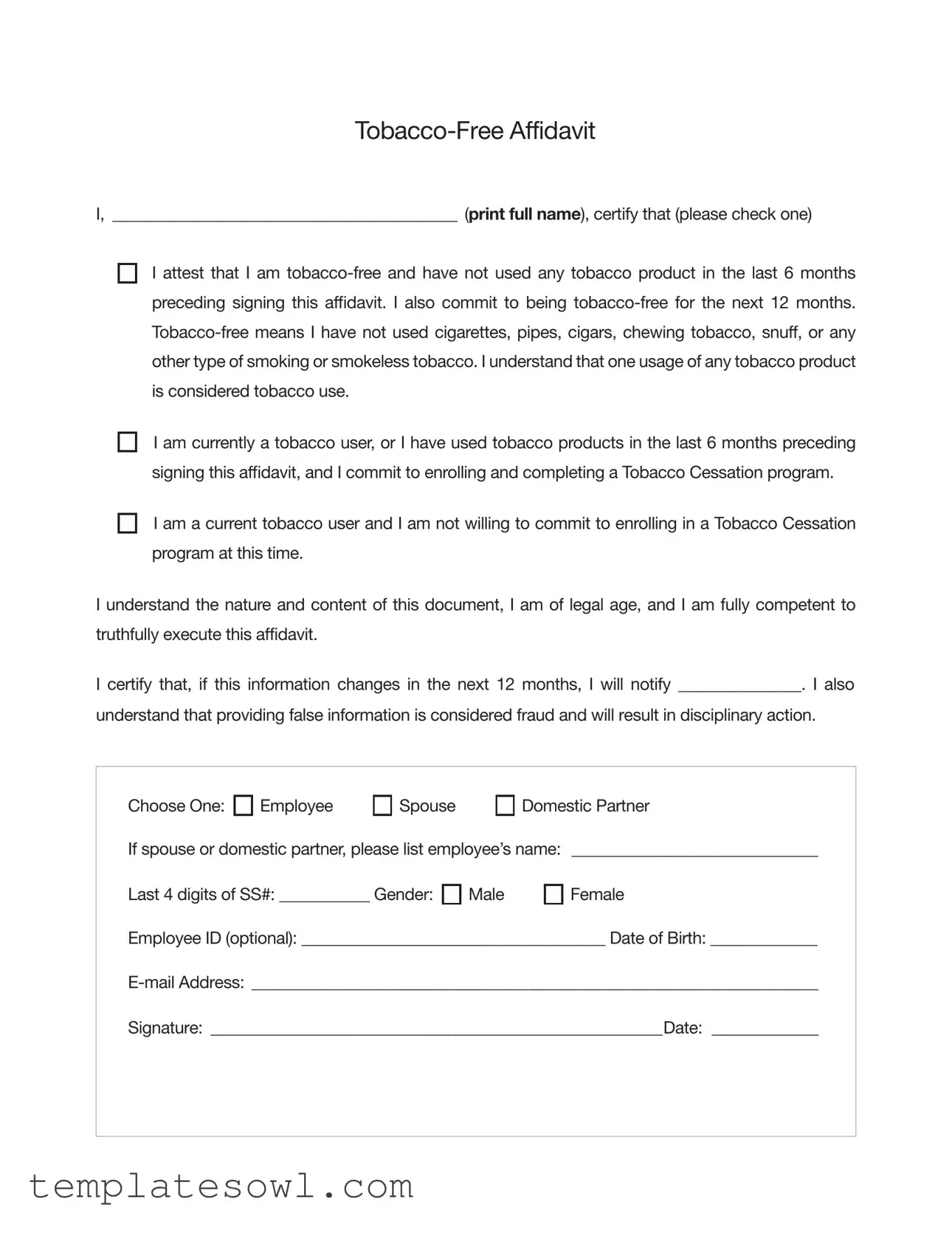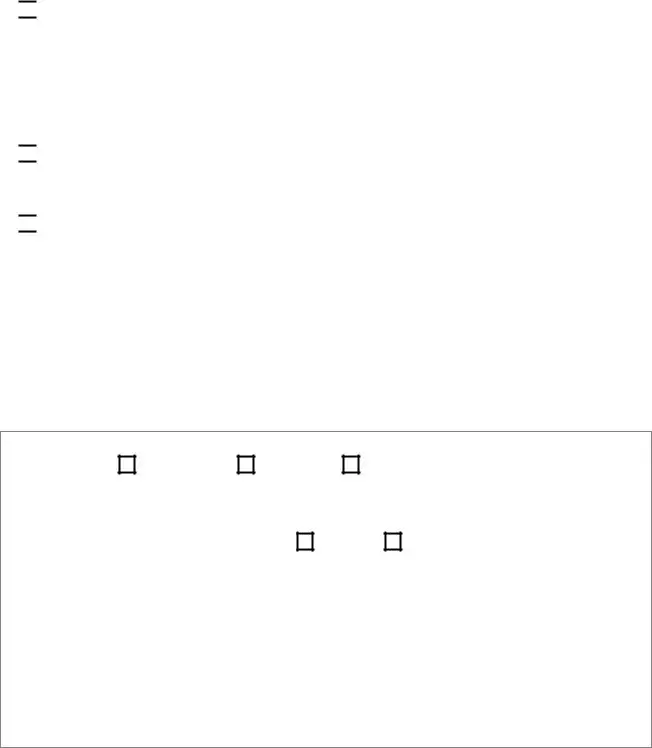Completing the Peia Tobacco Affidavit form can seem straightforward, but several common mistakes can lead to complications. One significant error arises when individuals fail to properly print their full name in the designated area. Leaving this blank or entering incomplete information can delay processing or even invalidate the affidavit.
Another frequent mistake involves incorrectly assessing their tobacco use status. It’s essential for individuals to check the appropriate box that reflects their current situation – whether they are tobacco-free, a current user, or a user who plans to enroll in a cessation program. Misrepresenting this information can have serious consequences, as it undermines the accuracy of the affidavit.
Individuals sometimes overlook the commitment to remain tobacco-free for the next 12 months. If this commitment is not acknowledged, it may create misunderstandings about the terms of the affidavit. Equally important is the understanding that even a single instance of tobacco usage within this period can affect one's commitments and responsibilities under the affidavit.
Another mistake occurs with the completion of the section related to changes in tobacco use during the year. When people forget to specify who they will notify regarding changes, they risk facing penalties. This section is vital for maintaining clear communication with the appropriate parties.
Additionally, some individuals neglect to specify their relationship to the employee, which could relate to a spouse or domestic partner. This detail is crucial for proper identification and benefits allocation. Failing to fill out this section can create unnecessary confusion.
Not providing the last four digits of the Social Security number is another common oversight. This information helps to verify the individual's identity and ensures that the affidavit is linked correctly to the appropriate records. Without this, there may be hiccups in processing the document.
Furthermore, individuals may not properly identify their gender, despite this being a simple choice. At times, failing to check a box can lead to delays, as incomplete forms are often returned for correction.
Another aspect that often gets overlooked is the optional Employee ID section. While it’s labeled as optional, providing this can help streamline the processing of the form, especially within larger organizations.
Finally, signatures and dates are critical. Individuals sometimes forget to sign or improperly date the affidavit. This oversight could render the document invalid, causing all prior efforts to be in vain. Ensuring every required field is accurately completed proves essential for a smooth experience with the Peia Tobacco Affidavit.



 I attest that I am
I attest that I am 


